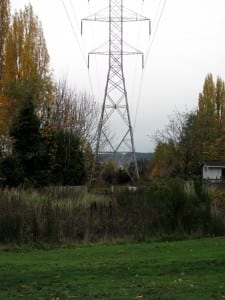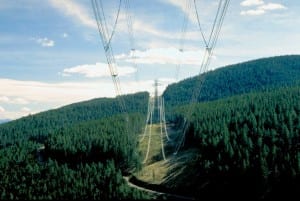 New federal regulations designed to protect the reliability of electric transmission lines require Seattle City Light to step up its vegetation management and access protection efforts on the 230 kV power line that runs from south Snohomish County to Renton.
New federal regulations designed to protect the reliability of electric transmission lines require Seattle City Light to step up its vegetation management and access protection efforts on the 230 kV power line that runs from south Snohomish County to Renton. New federal regulations designed to protect the reliability of electric transmission lines require Seattle City Light to step up its vegetation management and access protection efforts on the 230 kV power line that runs from south Snohomish County to Renton.
“Protecting transmission lines from trees that might disrupt operations is important to the region,” Superintendent Jorge Carrasco said. “Trimming or removing potentially hazardous trees ensures reliable electricity service throughout the Northwest and enhances the safety of the people who live, work, go to school, or play nearby.”
The new regulations were created by the North American Energy Reliability Corporation to protect against large blackouts like the one that affected millions of people in the Northeast in 2003. Failure to comply can lead to fines of up to $1 million per day.
From a public safety standpoint, trees that grow near high voltage transmission lines can become electrified even without touching the line, creating a hazard to anyone in the area. Earlier this year, a tree that contacted the eastside transmission line carried electricity down its trunk to a fence and then to an underground natural gas line, which caused an explosion in the line and the home it served. Fortunately, no one was injured in the incident.
City Light is contacting property owners along the eastside transmission line to let them know about the work that will be starting soon. The utility will start work at the Bothell end of the transmission line in September and work south to Renton.
The utility holds permanent right-of-way easements along the 32-mile transmission line that allow for the maintenance and operation of the line.
One component of maintenance is trimming or removing trees and other vegetation that could interfere with the safe operation of the transmission line. Additionally, property owners cannot build any structures in the easement that interfere with access to the line and its towers. Any fences built across the right of way must include a gate approved by City Light.
Under the new federal regulations, vegetation management practices are being enhanced. This will involve the removal of some trees that might have been trimmed in the past. Whenever City Light removes a tree, the wood will be stacked and left for the property owner. The property owner will also receive a certificate that can be exchanged at participating nurseries for a tree that will not grow to more than 12 feet at maturity.
Where fences without access gates or other structures have been built in the right of way, City Light will work with property owners to bring the structures into compliance with the easement.
“While City Light must protect the continued, reliable operation of the transmission line and abide by the NERC rules, we also want to be good neighbors,” Carrasco said. “We are notifying property owners well in advance to let them know what will be done and why. And we will work with them as much as possible to resolve problems associated with vegetation or access.”

